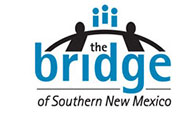The Art of the Hack
As published in the Las Cruces Bulletin
When some of our county’s new friends from Dell, Inc,. came to town earlier this month, they brought with them a tool, a process, they’ve used in other communities – a PolicyHack.
Dell defines a PolicyHack as an event “where teams design solutions to policy challenges faced by entrepreneurs and pitch their ideas to a diverse panel of expert judges.” Really, a PolicyHack is a process that brings together members of a community’s public and private sectors to work in teams to identify solutions that solve a challenge, are innovative, and have a real shot at being adopted and replicated.
Framed with a strategic set of questions, the PolicyHack process brings forth the collective wisdom of a community to thoughtfully and holistically solve a community problem or seize an opportunity.
That’s exactly what happened when business, government, and other community members came together at the War Eagles Museum in Santa Teresa to explore just what we could do, and what it would take, to bring the long-pondered US/Mexico bi-national campus to life.
The HQ2 Countries proposal for Amazon’s headquarters well framed by an opportunity that stands before us. Cross-border relationships that already exist, land that already exists, and a shared vision of what “could be” gave us a proposal that made national headlines in the race to land Amazon, even though they chose to locate elsewhere.
Revisiting this concept in the forum of the PolicyHack surfaced an even larger vision for what was possible in this unique place and what it would take to make it real.
The timing couldn’t be more significant. Our border is all over the news right now, and not in a positive way. It represents cultural and political polarization in the country and vibrantly illustrates how the failure to pass good policy has created a situation that benefits no one.
The real vision that emerged from the PolicyHack stands in stark contrast. Both winning concepts, a “Campus of the Minds” and an Industry 4.0-driven epicenter for high growth, high wage career clusters, built on the strengths that exist across borders to increase opportunity for everyone.
This idea that a single piece of land could bring together the very best of countries, cultures, languages, ideas, innovation, entrepreneurship, and economy, all while “transcending” borders, provided a compelling illustration of what good border policy could bring. To no one’s surprise, it would take some pretty ground-breaking solutions to pull it off. Transnational treaties and mutually beneficial economic agreements are one thing…doing in a way that navigates and honors local, regional, and national law is the trick…thus, the PolicyHack.
The process provided a roadmap to navigate on the way to the destination of a bi-national campus. But what if we did figure it out? What if that piece of land presented us the prospect of connecting the assets of not just countries, but continents? What if it allowed us to build on our strengths, like the bi-cultural identity we already embrace as a community? In fact, Dell’s Cris Turner commented several times about the comfort and ease with which we navigate our dual-language, bi-cultural identity as a strength he’s simply not seen in other communities.
Success in this would be a game changer. New opportunities would emerge for students through the collaboration of two countries’ and two states’ educational institutions. Our region would be at the cutting edge of Industry 4.0 – the Internet of Things, Artificial Intelligence, et al – with application in the industries we already have, like biomedical, manufacturing, and energy. It would present our people with new opportunities for a strong economic future.
The PolicyHack clearly demonstrated that we already have the right people to bring a binational campus to life – one rooted in education for the expressed purpose of innovation and industry application. Over and over again, this community demonstrates its ability to collaborate to solve community challenges and seize new opportunities – like our state-leading high school graduation rates and the landing of Spaceport America and the Burrell College of Osteopathic Medicine.
Dell has committed to work alongside us over the next 18 months on this journey, but it’s up to all of us to make it real.

